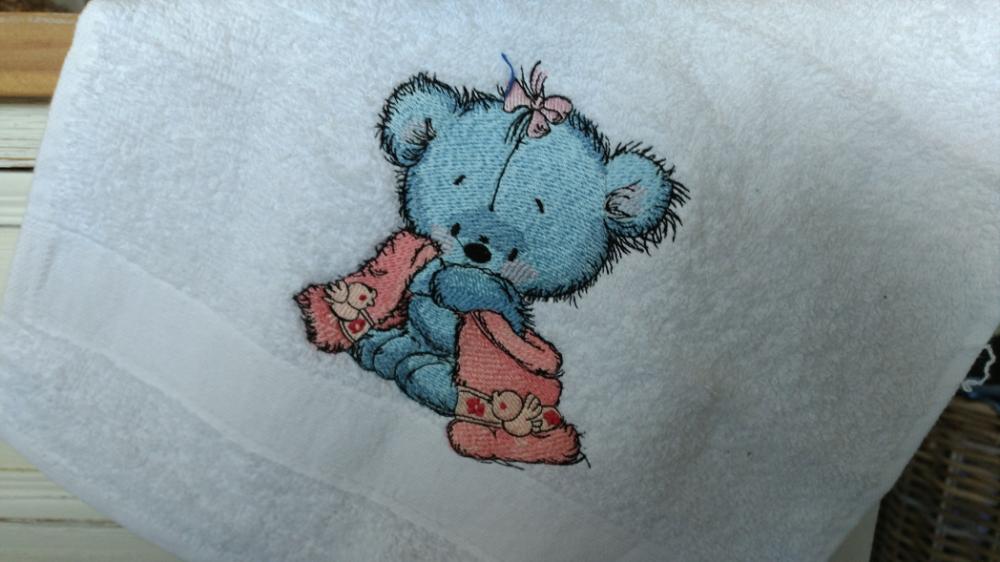Search the Community
Showing results for tags 'fabric embroidery'.
-
Mastering the Art of Terry Cloth Embroidery: Needles and Threads The composition and properties of terry cloth Fabric involves a looped pile, commonly employed in the production of towels, beach robes, bath slippers, bedding, and children's linens, as well as children's toys and even bar accessories. Regarding the composition of terry cloth, it is primarily manufactured from cotton, linen, and less frequently, bamboo. The fabric exhibits excellent moisture absorption and does not stretch. The range of applications and the enumerated properties of terry cloth make it attractive for machine embroidery in both hobbyist and industrial contexts. Recently, there have been instances of incorporating synthetic fibers into the fabric composition. This slightly diminishes the quality, but does not impact the embroidery outcome when used as a base material. There are also benefits. Terry cloth with the addition of synthetic fibers is employed in crafting items such as baby bibs, resulting in soft products that can be easily laundered following breakfast and lunchtime incidents. Machine embroidery on terry cloth fabric requires consideration of density, thread twist, and loop height. These are the primary properties to focus on when mastering the technology of machine embroidery. The higher the loop, the greater the probability that stitches will sink into the fabric structure or will peek through the stitch coverage of the design. The thicker the material, the more likely it is that you will encounter problems when framing it, as securing the material in the embroidery hoop properly may be challenging. It is feasible but difficult; is it necessary? Let us proceed further. Selecting the Perfect Needle for Your Project When it comes to embroidering terry cloth, there's no need to stress over needle selection. The fabric can be beautifully embroidered using standard embroidery needles. However, if you do encounter issues, consider these specialized needles: For embroidery on loose terry fabrics, opt for needles with a rounded tip, like those designed for jersey embroidery. This type of needle gently separates the material without damaging its structure. When working with dense terry cloth featuring a high loop pile and a significant amount of synthetic fibers, utilize a sharp-pointed needle, such as a topstitching needle. This needle effortlessly pierces the material, preventing skipped stitches. Navigating Thread Choices for a Dazzling Finish If you've decided to embroider with metallic thread, use a needle specifically designed for this thread, as metallic threads can be finicky. When passing through the small eye of an improperly chosen needle, the thread may wear and lose its sheen, or worse, continually break. When embroidering on terry cloth, feel free to use any threads (cotton, polyester, wool, etc.). The primary goal is to ensure the threads are durable and wear-resistant. Viscose and metallic threads may be less tolerant of frequent washing and poorly compatible with bleach and other chemicals used in laundering. Advice on selecting the bobbin thread might not be groundbreaking. Use a standard bobbin thread (either black or white, depending on the color scheme of the design). The thickness of the bobbin thread depends less on the properties of the chosen material and more on the idiosyncrasies of your embroidery machine. Some machines, for instance, have been observed to be incompatible with very thin bobbin threads (No. 200). When embroidering on terry towels, consider using a bobbin thread that matches the color of the embroidered layer. In this case, the reverse side will appear more elegant. Keep in mind that this approach will result in denser embroidery.
-
- textile art
- needle selection
- (and 5 more)



